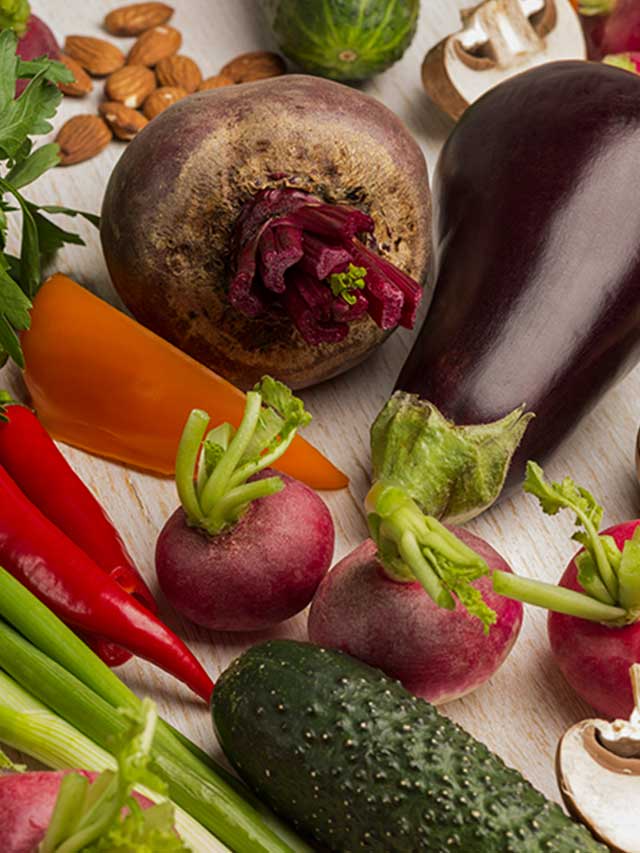The Channel 46
8 Alkaline Foods To Include In Your Meal Plan

1. Alkaline Vegetables
Include a variety of green, leafy vegetables in your meals. They can be spinach (palak), fenugreek leaves (methi ka saag), mustard greens (sarson ka saag), cauliflower (gobi) and broccoli.

Green Vegetables
These are also highly alkaline vegetables and should be included in your daily meals.

Onion, Garlic & Ginger
These include carrots, sweet potatoes (not potatoes), beets (chukandar) and lotus stems (kamal kakdi).

Root Vegetables
2. Alkaline Fruits
Anjeer is one of the most alkaline foods. It is best if you can get them fresh. If not, then get dried ones and consume with milk for breakfast.

Figs
It is important to understand that just because a food has acid in it does not mean that it will have an acidic residue.

Citrus Fruits
Bananas are rich in potassium, fibre and other good nutrients that help restore bone and muscle health.

Banana
Replace your table salt with sea salt (samudree namak) as it is alkaline and richer in minerals. Plus, it does not cause any difference in flavour so it can be easily incorporated.

3. Sea Salt
Nuts are a source of healthy fat. They also provide a boost of energy and are good for snacking. Alkaline nuts are almonds (badaam), hazelnuts (pahadi badaam) and chestnuts (singhada).

4. Nuts
While most cereals and pulses by themselves are acidic, they become alkaline when sprouted. Therefore, sprouts are a healthy and filling option to include in your meals

5. Sprouts
While most commonly-consumed cereals are a no-no on this diet, there are some that you can have. These include millets (bajra), quinoa (chaulai), and amaranth (rajgira).

6. Cereals
Green tea or other herbal options like chamomile (babuna) or dandelion (sinhaparnee) tea should be consumed for hot beverages.

7. Beverages
You can use butter and olive oil to cook as they have a neutral character. But their consumption should be limited.

8. Fats
The Channel 46
For More Information, Click Learn More
